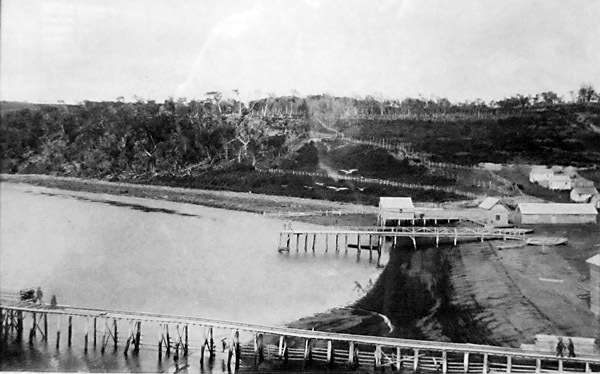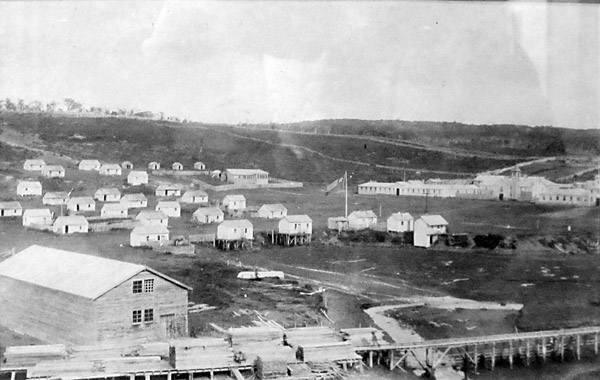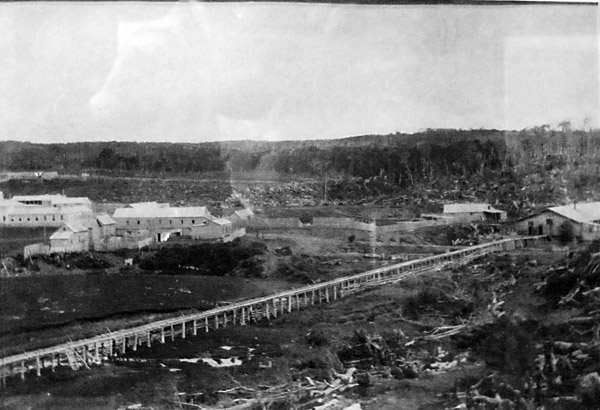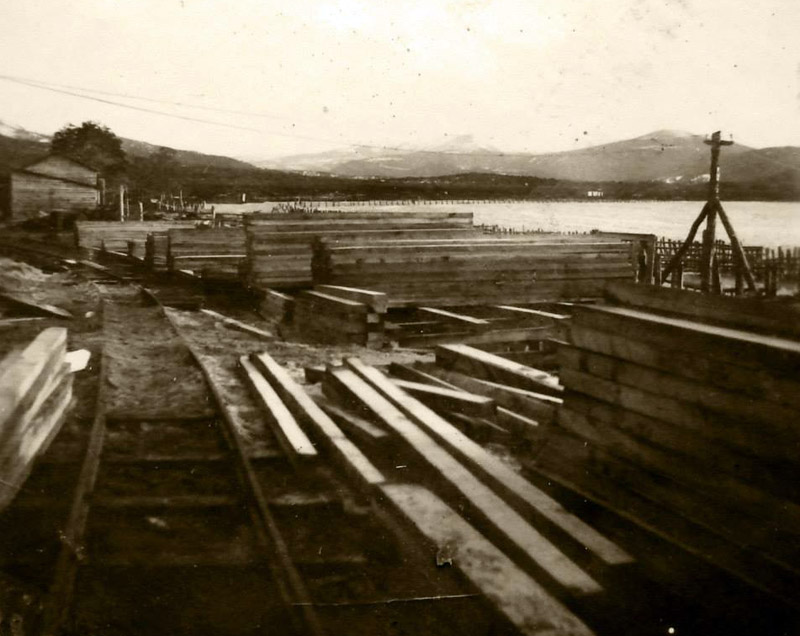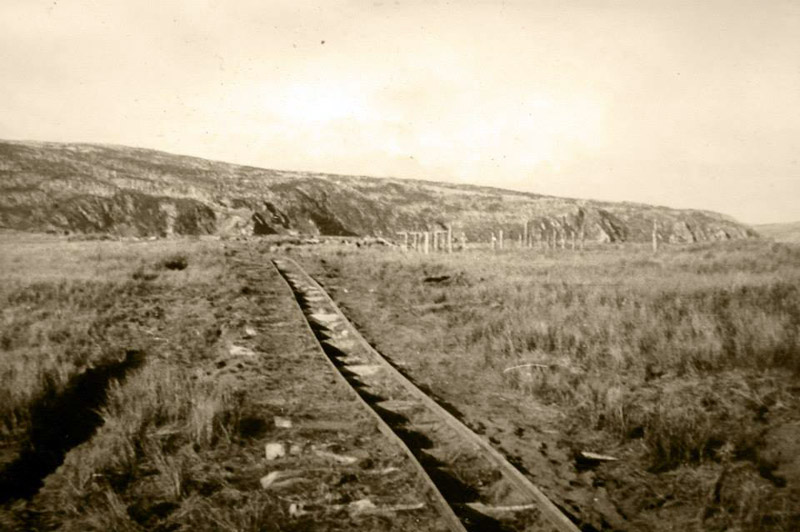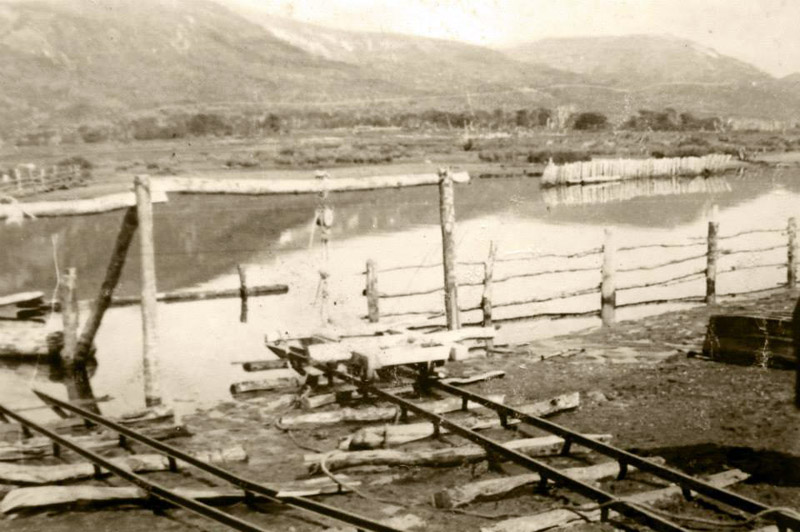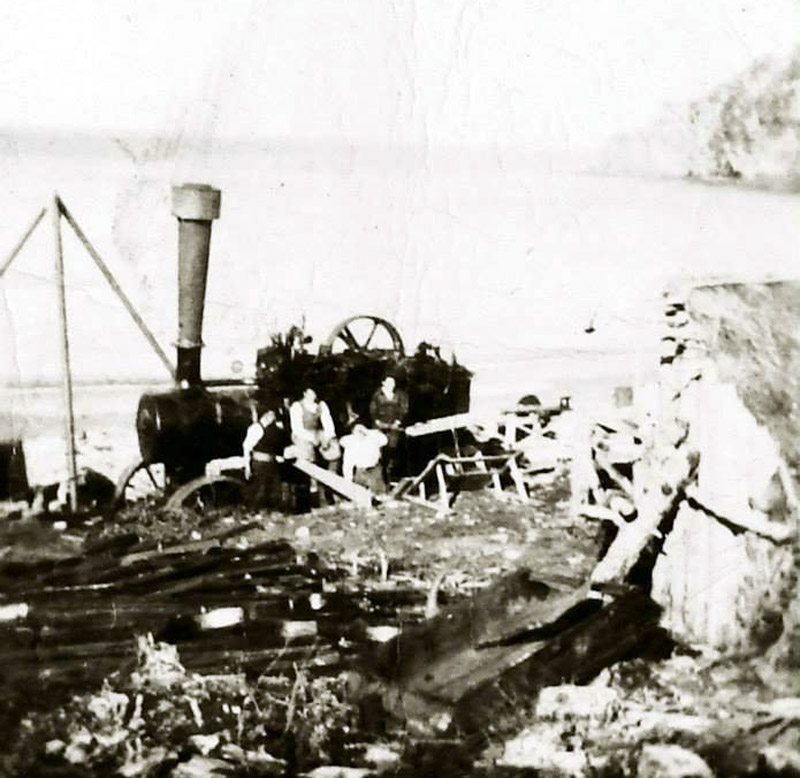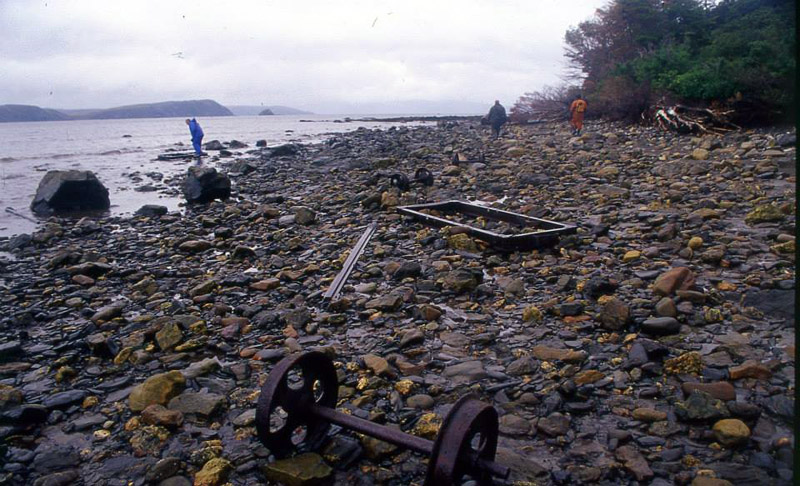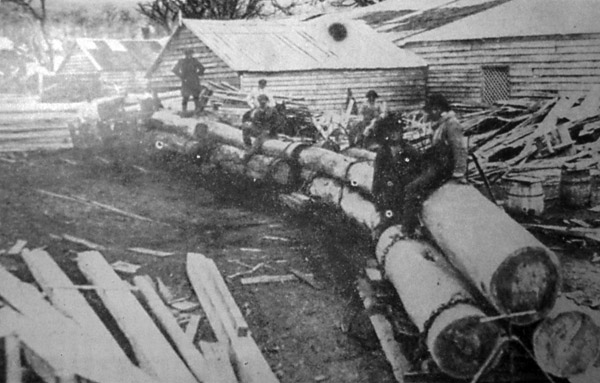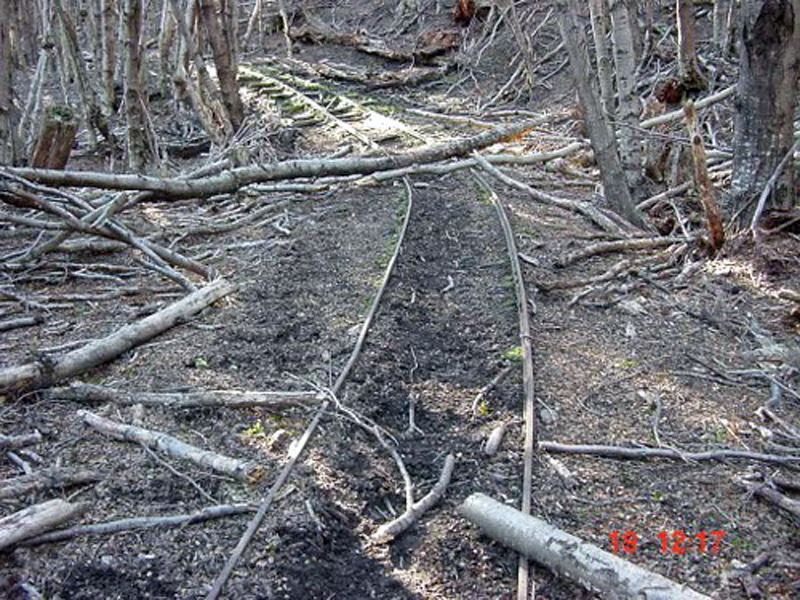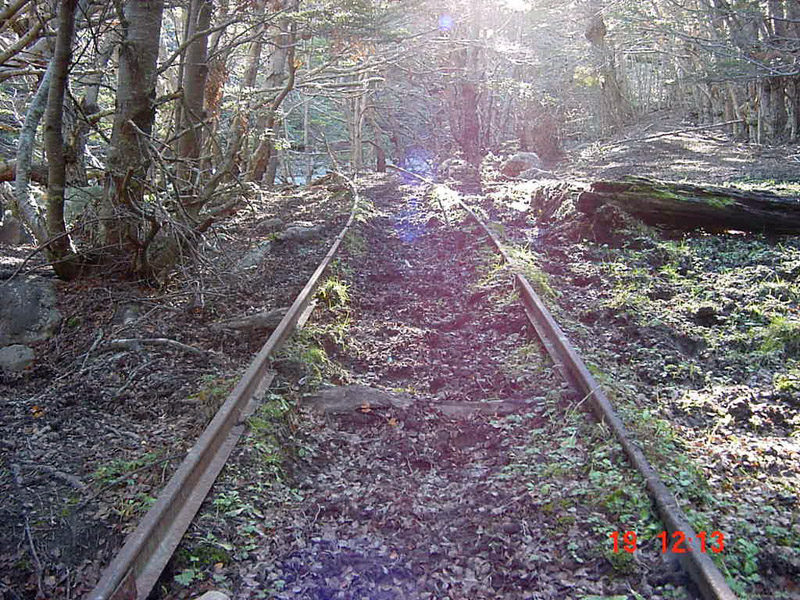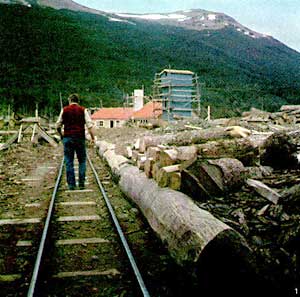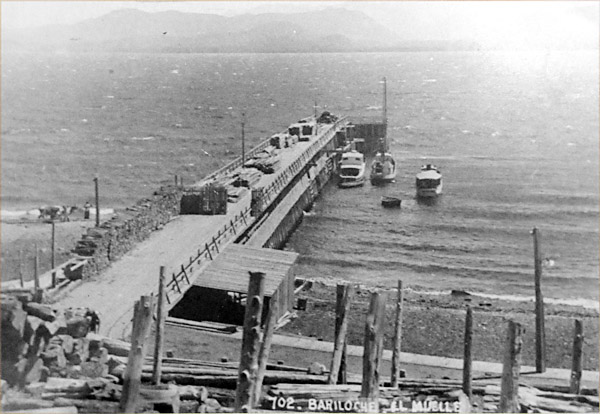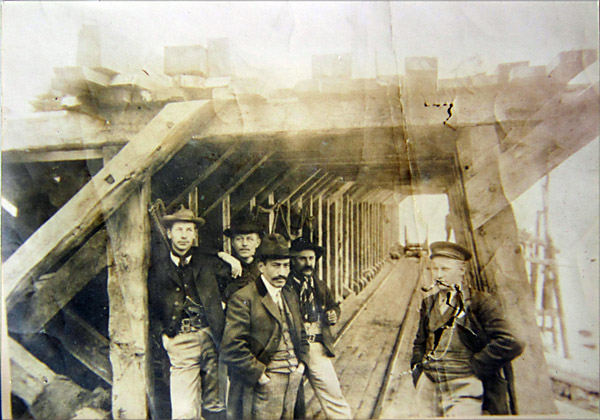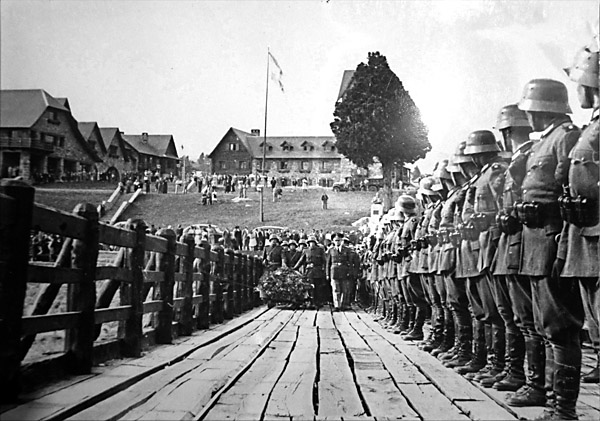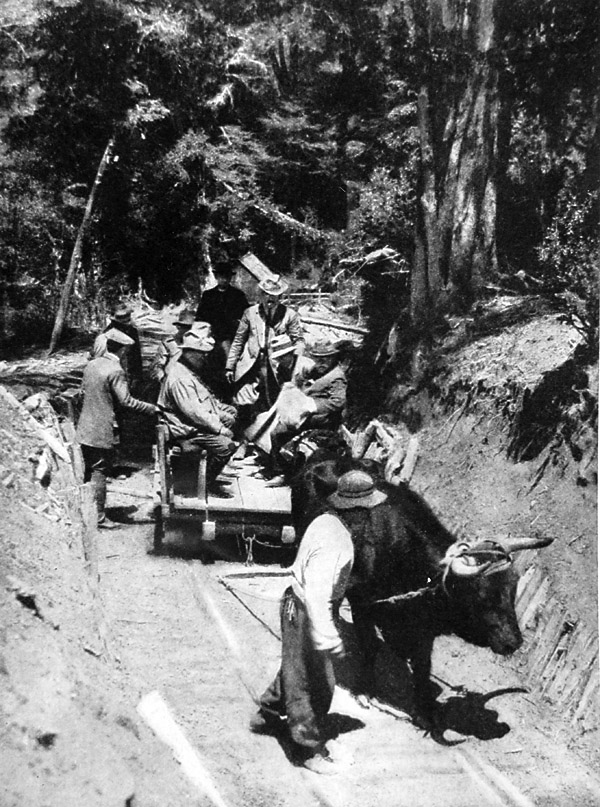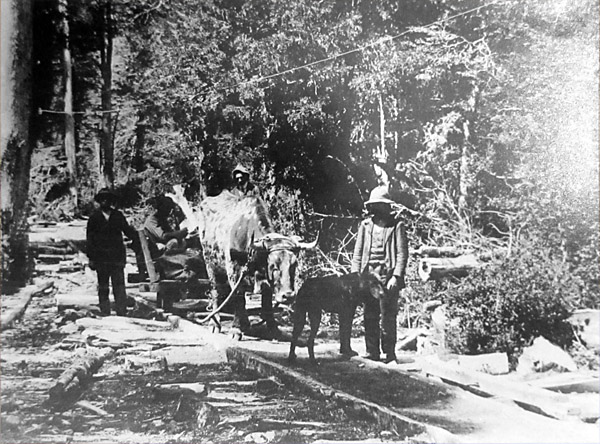 |
|||||||||||||||
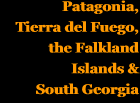 |
|||||||||||||||
 |
|||||||||||||||
 |
|||||||||||||||
Forestry and sawmills The western, Chilean, side of Tierra del Fuego and nearby parts of the mainland contained vast tracts of forest when Europeans first arrived. It was these forests which were the first natural resource to be exploited, from the 1840s onwards. The first area to be cut was the Brunswick Peninsula around Punta Arenas. As the industry developed larger sawmills were built, first driven by water wheels, but from 1875 onwards increasingly using steam power (1). From the 1890s onwards the sawmills spread further afield, and onto some of the outer islands. However, the most important timber-producing zone through the 1920s to '40s was the west coast of Isla Grande. Here the big sawmills of La Paciencia, Puerto Arturo and Puerto Yartou were set up by the Sociedad Anónima Ganadero, the Menéndez Behety combine and by Alberto Baeriswyl. In the 1930s Mateo Martinic's paper suggests there were twenty-two large sawmills in Magallanes province employing around 2000 men. However, this was the peak, and economic problems partly caused by periodic restrictions on timber imports into Argentina led to decline from then on. There was a sawmill at the Puerto Bories frigorifico in Última Esperanza. This was linked to the frigorifico railway described and illustrated in Chapter 8 and, indeed, the second muelle was in front of the sawmill. The example of the prison forest railway at Ushuaia on the Argentinian side of the border makes it likely that forest railways were used elsewhere. Sergio Zagier recalls seeing railway tracks in the derelict Puerto Arturo sawmill. The photo below shows a train of wagons in Puerto Yartou mill, and linked together in such a way that loco power was probably needed to shift the train. The mill on the east side of Dawson Island, later run by the Sociedad ganadera Gente Grande from 1911 to 1926, also definitely had a 600m. railway down to the nearby muelle (2). British Admiralty Chart no. 3610 of 1906 shows the muelle and associated railway track, confirmed by a 1903 photo in the collections of the RGS in London. This may have extended up the hill into the forests but this is not certain. The following three photos, though of poor quality, do show the long trestle carrying a rail track from the Isla Dawson sawmill down to the muelle. They were all taken from the same spot, at the norh-east of the south-east facing bay.
Sawmills at Tolhuin on the Argentine side of the border certainly have old rails performing the usual varied duties. From a posting on Facebook by Carlos Vairo come these views of a railway associated with a sawmill at Bahía Aguirre which is located on Península Mitre at the extreme south east corner of Tierra del Fuego. The first view is of the line through the stock-pile of sawn timber awaiting shipment. At the right of the picture can be seen a rickety pole supporting, presumably, the electricity supply to the muelle. (2A)
The next view shows the line heading towards what looks like a cliff top over what could be a peat bog.
A view showing the end of tracks at the water's edge.
This shows the motive power for the saws with, behind to the left, a Scotch derrick. There does not appear to be a power take off from the engine.
And finally a modern view of the beach showing a wheel set and what looks like the frame of a trolley.
A photo taken at Puerto Yartou sawmill, showing four wagons apparently coupled together.
Many of the estancias built their own sawmills, often powered by a portable steam engine. Mrs. Natalie Goodall of Estancia Harberton confirms in her guidebook to Tierra del Fuego (3) that the nearby Estancia Remolino on the Beagle Channel built a railway line from its sawmill northwards for two or three miles into the Cañadon Remolino. Since writing this in 2008 we have learnt that it had metal rails as these two photos taken by Juan Fosati in 2010 and published on Panoramio clearly show.
The photo below, provided by Marcelo Benoit, is from a book, and apparently shows some sort of timber line 'in Chubut province'. It appears to be about 75cm. gauge (certainly less than 1m. but wider than 60cm.) but is not identifiable as being on the Esquel line.
The town of San Carlos de Bariloche on Lago Nahuel Huapi also lies in a forested area. A number of sawmills grew up in the town and close-by. One of these was owned by the Caprari family, well known as entrepreneurs in Bariloche. This was located just above the lake shore, until a major fire in the 1920s and its subsequent replacement by the town square. No available photos of the sawmill show railway tracks, but the muelle below the works was recorded more efficiently. This structure was unusual in having two decks both with narrow gauge tracks. A view from the sawmill down to the muelle below. A narrow line of rail track appears to curve off the upper deck and around to the right.
The lower deck, with a line of tracks of perhaps 75cm gauge? It looks as if this picture may have been taken during construction. Strangely the track appears to be wider than that on the upper deck, though this may be an illusion.
Whilst the sawmill closed after the fire in the late 1920s, the muelle continued in use. Here a military escort is lined up whilst the coffin of Perito Moreno, a famous explorer of Patagonia, is wheeled along the the track on the upper level of the muelle on its way from the La Recoleta Cemetery in Buenos Aires to reburial on an island in Lago Nahuel Huapi in 1944. The site of the Caprari sawmill had been on the slope above. The style of uniforms and helmets may give clues as to the wartime sympathies of the Argentine government of the time, but a more subtle allusion is to the burial of Sir Ernest Shackleton at Grytviken in South Georgia in 1922; his coffin also being transported along narrow gauge tracks.
In the same area there was a wooden railway (a xilo-carril in Argentine parlance) to provide a link between Lagos Fria and Nahuel Huapi to the west of Bariloche. The two photos below illustrate this link. It is still not clear whether this was strictly a railway (ie. with flanged wheels running on rails) or a plateway (with the rails only guiding the wheels which actually ran on wide boards).
Whilst both photographs show passengers being carried, it seems likely that timber exploitation provided much of the raison d'etre of the route, hence its inclusion on this page.
References: 30-1-2018 |
|||||||||||||||
Chapter 13
A variety of industrial railways


